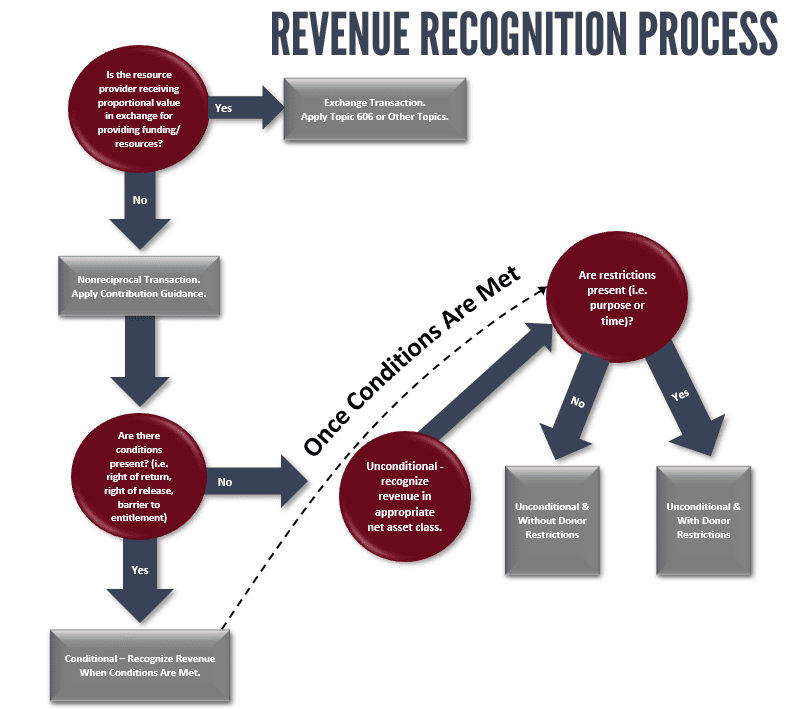Knowledge and Insights
Nonprofit Grants & Contracts – It’s Time to Implement FASB ASU 2018-08

In June 2018, the Financial Accounting Standards Board (FASB) released Accounting Standards Update (ASU) 2018-08, Clarifying the Scope of the Accounting Guidance for Contributions Received and Contributions Made. The update aims to minimize diversity in the classification of grants and contracts that exists under current guidance.
Following are key considerations, as well as a flowchart diagram, to assist your organization’s decision-making and accounting for this update/aspect of the revenue recognition process.
Issue #1: Determine Reciprocal (Exchange) versus Nonreciprocal (Non-Exchange/Contributions) Transactions
- The question to ask is: “Who receives the benefit?”
- The resource-provider (aka donor/contributor) is NOT synonymous with the general public, even if it’s a governmental entity. If a resource-provider receives value indirectly by providing a societal benefit, this would be considered a nonreciprocal transaction.
- Execution of the resource-provider’s mission, or the positive sentiment from acting as a donor, does not equate to commensurate value received by a resource-provider.
- Exchange transactions are recorded in accordance with Topic 606 (outside the scope of this article) and non-exchange transactions are recorded based on guidance provided within ASU 2018-08.
Issue # 2: Conditional versus Unconditional Contributions
- The question to ask is: “When is the entity entitled to and when can an entity keep and/or receive the payment?”
- Under the new ASU, there is no assessment of the likelihood of failing to meet a condition for ultimately determining if it’s conditional or unconditional.
- For a condition to exist, an agreement must include: 1) a barrier to entitlement and 2) a right of return/release. The presence of both elements represents a condition for the contribution.
- Barriers can include:
- Inclusion of a measurable performance-related barrier, such as a level of service requirement, matching requirements, or other specific output or outcomes.
- The extent to which a stipulation limits discretion by the recipient on the conduct of an activity, such as a requirement to hire specific individuals as part of the workforce, or incurring only qualifying expenses that are based on specific requirements.
- The extent to which a stipulation is unrelated to the purpose of the agreement, such as a requirement to file grant reports, which is deemed to be an administrative requirement. In this case, the stipulation doesn’t constitute a barrier.
The ASU provides for different effective dates for contributions received versus contributions made. For resource-recipients, most entities should apply the amendments effective the year beginning after 12/15/2018. For resource-providers, most entities should apply the amendment effective the year beginning after 12/15/19. Early adoption is permitted.

Additional Considerations & How Mercadien Can Help
This accounting standard update requires various departments within your entity, together with the funding source, to collaborate, and ensure all appropriate individuals are involved in the process – from pre-award, award, to management of awards. We can help by educating your team and governing board on the upcoming changes and assisting with the analysis and documentation of the ASU 2018-08. We have created an implementation guide for each of the main provisions of ASU 2018-18, which includes detailed descriptions of the provisions, considerations for management and the board, and examples of various grant situations and revenue recognition.
If you need assistance getting ready for the new ASUs, contact me at lbuttar@mercadien.com or 609-689-2421.
